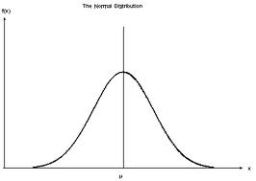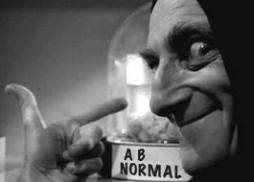A deep, dark secret that I seldom disclose to anyone but my closest friends and only after I have established a granular of credibility is that in college I majored in a social science: psychology. While many of my friends were learning how to differentiate assets from liabilities (accounting), pondering the accuracy of supply & demand (economics), and being confused by complicated year-end reports (finance), I was studying how people behave or misbehave. I learned in Psychology 101 that while most people consider themselves “normal,” there are likely only a very few that are just that. After all, normalcy is derived from calculating the average (mean) of large groups of numbers, in which a mere handful of individual representations are exactly that product. Following the math, since so few of us can truly be said to be normal (average), is it correct that most of us must then be abnormal?
Let us put aside for another time the debate that normal behavior could also be a representation of either the mode (highest frequency) or the median (exact center point of a range of measurements), rather than the statistical average (mean) of large groups of observed behavior. Now that we are thoroughly confused with the math of observing what is normal, perhaps we could agree that most of us are at least able to recognize what is NOT normal. I will always remember PIMCO’s Bill Gross’ conclusion that global markets may be neither normal nor abnormal, but paranormal.
2013 may seem paranormal to many of us; that is, it looks odd that the stock markets are calm, even positive about the final fiscal cliff conclusion…a slight income tax increase for a very few Americans combined with little-understood promises to curtail decades of spending growth. It appears that the confusion about the importance of the fiscal cliff and lots of other geo-political issues have divided people into three identifiable investor-behavior groups: (1) those who have resorted to 1970’s-type saving…they returned their money to low-no risk instruments, like Bank CD’s. These people have been burned twice (2001, 2008) in the stock market, regardless of what they tried, and have “thrown in the towel.” (2) some have put the pedal to the metal and gone “all in.” That is, they have concluded that riskier choices are the only way they can reach their retirement goals and have abandoned risk-free options. This group seems willing to lose it all in lieu of settling for current low interest rates. (3) a few are seeking professional financial advice to help them navigate the high seas of money management and are using old diversification strategies, but are including new tactics; i.e., alternative ideas and products.
It may be difficult for us to agree about labeling these three respective groups of people as abnormal, paranormal, or normal. Let’s remember that what looks one way to one person, may look differently to the next person. Or to put it another way, “It’s all in the eye of the beholder.” How are you behaving this year…normally, para-normally, or abnormally?



Enjoyed the post. I fall into category 3. Mostly “in” with broad diversification. My “timing” efforts suck. The last two times when I chose to pull out and dca back in I missed out on opportunity more than missing the “falling knife”.
Ah, the perils of timing! Perhaps you could look at it differently…maybe as “taking some money off the table once in a while. No one is perfect. But today it is as foolish to think that buying & holding is the only tactic possible. With a little sense, it is easy to capture obvious excessive gains periodically. As important is to make sure to (1) re-invest soon (2) admit it when your timing decision was not perfect and (3) look for similar opportunities on the other side of the trade.
nice job